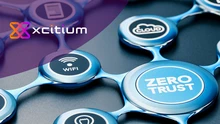
For customer-facing organisations, digital transformation has become somewhat synonymous with customer experience (CX). Today, CX is overtaking product quality and price in what consumers are judging the most. In turn, businesses are heightening the CX they deliver, particularly digitally, to retain customer loyalty and, in return, enjoy increased revenue. One aspect of CX that businesses are focusing on is personalisation. At the beginning of a personalised experience timeline, personalisation may encourage customers to make an initial purchase. However, the main advantage of personalisation is that it helps to sustain one-to-one relationships with the customers. Elements of this includes addressing customers by their name and giving recommendations based on their purchase/browsing history. In turn, we have created digital equivalents for walking into a coffee shop and being asked "the usual?" Personalised experiences are no longer just a nice-to-have. Instead, they have become an expectation – but why is this, and how do companies meet this demand?
The perks of personalisation
Personalisation shows customers that a brand is flexible and adaptable by meeting individual needs. In particular, customers can appreciate a company's efforts to respond to their needs, emotions, behaviours, and more while enjoying individualised attention. Furthermore, it's convenient for the customer to have content tailored to their preferences and tastes for a quicker, easier experience. As well as this, personalisation is a great way for companies to show gratitude towards consumers for past business. With so many businesses today providing fantastic personalised experiences, it has undoubtedly become a factor in customer decision-making when choosing between different offerings. The companies that have pulled it off well are those that have seasoned their customer journey with personalised elements throughout. To do so, organisations must zero in on data, customer behaviour, and technology. Fortunately for businesses today, there are numerous technologies to take advantage of. In particular, artificial intelligence (AI) and machine learning (ML) can help organisations hone in on data to enable personalised elements such as recommendations. Not only that, but AI and ML are especially reliable in getting the right content to the right person at the right time. Thus, it's the responsibility of organisations to explore these technologies at their disposal. Personalisation is no longer a competitive edge – it's now the norm. The real competition is not who is delivering it, but who is delivering it best.
For more on communications, check out this opinion piece on what organisations are looking for in UC platforms.












